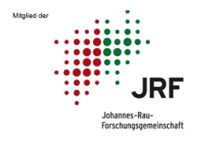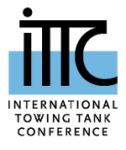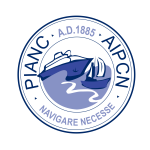Study to examine the need of supportive funding for small and structurally optimized inland vessels
The study addresses the challenges of increasing low water situations for inland navigation as well as the problem of decreasing availability of smaller inland vessels. It examines the technical possibilities and economic feasibility of possible measures as well as the necessary scope of support for small and/or constructively optimized inland vessels.
Number of small and constructionally optimized inland waterway vessels
The analysis of statistics and databases proves the decline of small ships and the simultaneous increase of large ships. In the period 1994 to 2019, the number of small units (up to 1,500 tons) has more than halved. The average deadweight tonnage has increased consequently from 987t to 1,308t. This development is expected to continue.
Demand for small and constructionally optimized inland vessels
The comparison of vessel demand and fleet forecast shows that a deficit of 179 vessels is expected by 2030. With water levels as in the low water year 2018, the deficit increases to 209 vessels. This would make inland navigation become less important in the affected market segments. For constructively optimized vessels, a deficit of 27 vessels is expected by 2030. This means that only a partial reduction in low-water risks can be achieved in market segments where reliability of supply is of great importance. This means there is a risk that cargo shippers will look for alternatives to reduce the risk and shift further volumes from waterways to other modes of transport.
Technical Options for the Conversion and New Construction of Small and/or Constructionally Optimized Inland Vessels
Of the various options for adapting barges to low water requirements, the following were considered exemplarily:
- Lengthening of the ship and thus increasing the cargo space. This enables an increase in the loading capacity with an unchanged draught and results in an improvement in economic efficiency in the medium to long term.
- Constructively optimized new vessel manufacturingThe focus of such a completely new vessel with diesel-electric propulsion and a two-propeller system is on improved low-water performance. Of all the modernization projects, this measure is attracting the greatest interest in the industry.
- Similar effects can be achieved with an existing ship by replacing the rear ship (partial new construction with diesel-electric propulsion and two-propeller system)
Economic evaluation
Exemplary calculations have shown that the costs for the use of newly built and modernized small ships increase significantly compared to existing ships. Costs are also significantly higher when using constructively optimized ships. Since no higher revenues can be achieved with new ships, the willingness to invest is consequently low. In addition, the higher costs weaken the competitive position in intermodal competition. Funding could reduce the cost disadvantages of new or modernized small ships. However, this would have to be sufficiently high to be economically interesting. This could reduce the obstacles to investment in small ships and provide a stimulus to cover the demand for small ships.
Recommended actions The study has shown that without appropriate countermeasures, the fleet of small ships will decline significantly and a noticeable deficit of “small ship space” is to be expected. The key aspect should be to secure the existing markets for small inland vessels, which are in a difficult competitive situation. However, small inland vessels are also of interest for new market areas such as urban logistics, feeder services complementing seaport-hinterland traffic and continental transport relations. In view of the rising cost of fossil energy, energy-efficient transport alternatives are also important apart from the Rhine. Existing funding programs are not suitable for addressing the lack of willingness to invest in small inland vessels. Admittedly, some programs are applicable in individual cases and can be combined with a new program if necessary. However, they are not suitable for providing a significant investment incentive. For this reason, the introduction of a new, targeted support program for small inland vessels is recommended.
Project duration:
- December 2020 – February 2023
Client:
- Federal Ministry for Digital Affairs and Transport (BMDV)
Point of contact:
- Cyril Alias, M.Sc.
Mail: alias@dst-org.de
Phone: +49 (0) 203 99369-52
Collaborative partners:
- DST – Development Centre for Ship Technology and Transport Systems
- PLANCO Consulting GmbH
- MARLO Consultants GmbH
- Studiengesellschaft für den Kombinierten Verkehr e.V. (SGKV)





